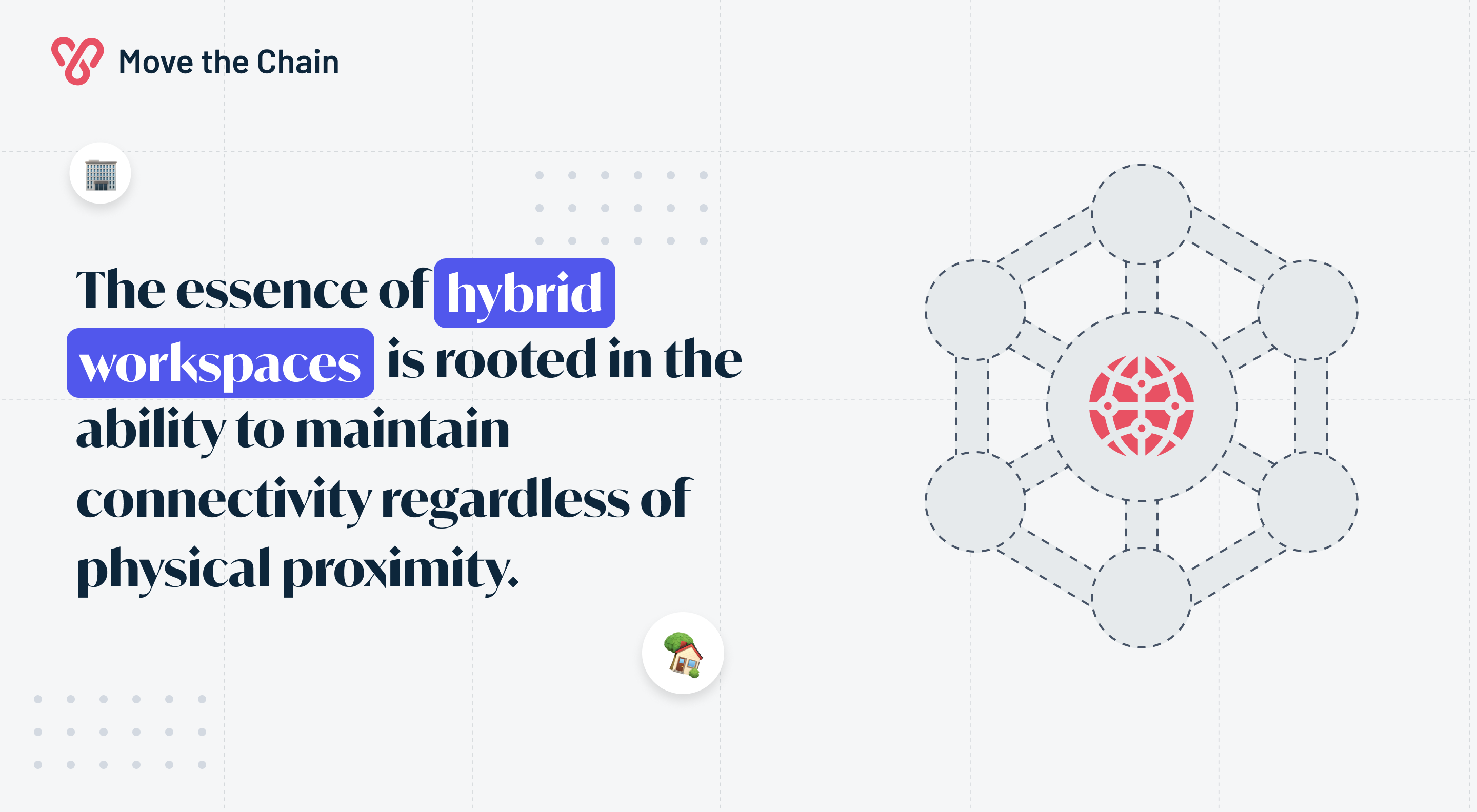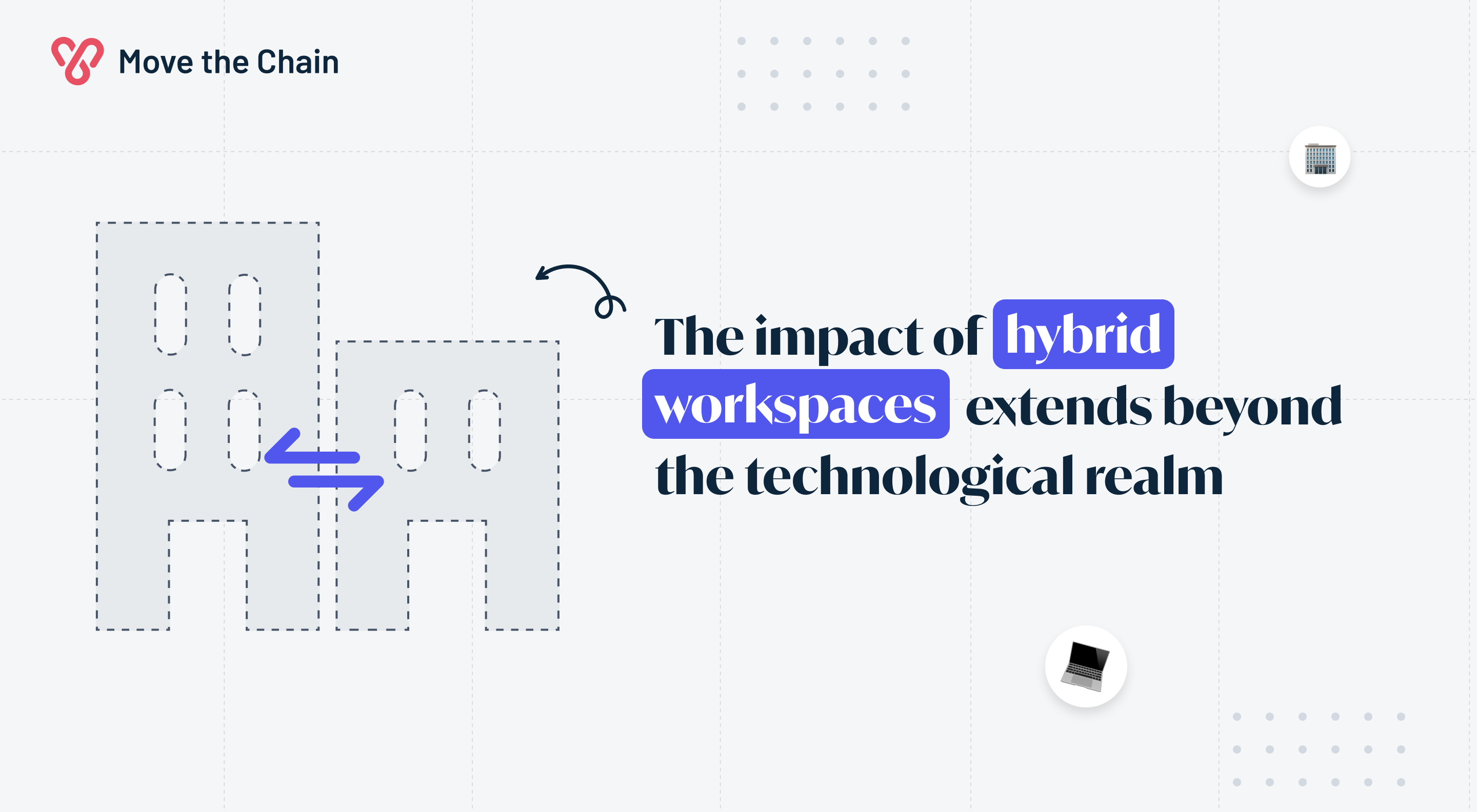Embracing the Future: Navigating the Impact of Hybrid Workspaces on Office Connectivity

Introduction:
In the ever-evolving landscape of the professional world, the concept of the traditional office space has undergone a radical transformation. The rise of remote work, accelerated by technological advancements and global events, has given birth to the era of the hybrid workspace.
This paradigm shift is not only reshaping the way we work but is also significantly impacting office connectivity. In this blog, we'll delve into the essence of hybrid workspaces, explore their implications, and dissect how they are redefining the very fabric of office connectivity.
Understanding Hybrid Workspaces:
A hybrid workspace represents a dynamic blend of traditional office-based work and remote work, offering employees the flexibility to choose where and how they work.
This model acknowledges that work is not confined to a physical location and allows individuals to seamlessly transition between remote and office environments.
It's a strategic fusion of in-person collaboration and the autonomy of remote work, creating a symbiotic relationship that caters to diverse work preferences and individual needs.
The Technological Backbone:
At the core of the hybrid workspace revolution lies a robust technological infrastructure. The amalgamation of cloud computing, advanced communication tools, and high-speed internet has facilitated the seamless transition between physical and virtual workspaces.
Video conferencing platforms, project management tools, and collaborative software have become indispensable components, fostering effective communication and collaboration irrespective of geographical constraints.
Impact on Office Connectivity:
Digital Collaboration and Communication:
The essence of hybrid workspaces is rooted in the ability to maintain connectivity regardless of physical proximity.
Digital collaboration tools have become the lifeline of this model, enabling real-time communication, document sharing, and project collaboration. From virtual meetings to collaborative document editing, these tools bridge the gap between team members scattered across different locations, fostering a sense of togetherness.
Flexibility in Schedules and Locations:
Hybrid workspaces provide employees the freedom to choose when and where they work. This newfound flexibility has redefined traditional notions of office connectivity.
With individuals operating from diverse locations and time zones, the challenge is to ensure that everyone remains connected, contributing to a shared organizational goal. Adaptable communication tools and cloud-based platforms play a pivotal role in maintaining a cohesive and connected workforce.

Challenges and Solutions:
While the benefits of hybrid workspaces are undeniable, challenges emerge in ensuring consistent connectivity. Issues such as varying internet speeds, time zone differences, and potential miscommunication need to be addressed.
Employers are adopting strategies such as asynchronous communication, providing stipends for home office setups, and investing in technology that fosters collaboration without compromising connectivity.
Emphasis on Cybersecurity:
As the boundaries of the traditional office expand into remote spaces, the need for robust cybersecurity measures intensifies. Protecting sensitive data, ensuring secure access to company networks, and educating employees on cybersecurity best practices become paramount.
Hybrid workspaces necessitate a holistic approach to cybersecurity that encompasses both office and remote environments, safeguarding the organization from potential threats.
Cultural Shifts and Employee Well-being:
The impact of hybrid workspaces extends beyond the technological realm. There's a cultural shift underway, emphasizing outcomes over hours spent in the office. This shift has implications for office connectivity as teams redefine how they collaborate and communicate.
Additionally, there is a growing emphasis on employee well-being, recognizing the need for a healthy work-life balance in the digital era.
Conclusion:
The hybrid workspace is not just a fleeting trend; it's a fundamental shift in the way we perceive and engage with work. As offices adapt to this new reality, the impact on connectivity is undeniable.
Embracing the hybrid model requires a holistic approach that combines advanced technology, flexible policies, and a cultural shift towards a more connected and empathetic workplace.
In this era of hybrid workspaces, the challenge lies not only in staying technologically connected but also in fostering a sense of belonging and collaboration among team members, regardless of physical distance. As we navigate this evolving landscape, it's crucial to recognize the symbiotic relationship between technology, human connection, and the future of work.
The hybrid workspace is not just about where we work; it's about how we stay connected, innovate, and thrive in a world that is increasingly defined by flexibility and connectivity.
